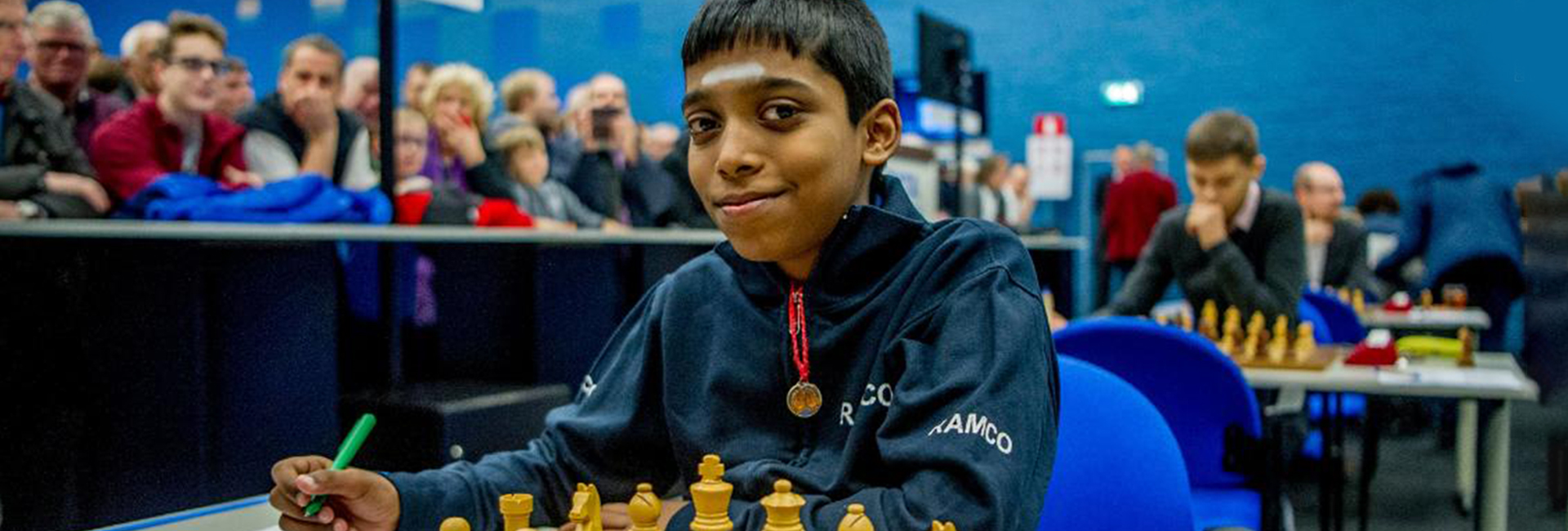(December 24, 2022) SL Narayanan was all of nine when the board game with 64 black and white squares grabbed his attention. It was at this young age that he learnt that the knight in chess moves multiple squares each time while the pawn moves forward one square. Such was his passion for the game that he aced it and won his first championship that same year. This taste of victory gave Narayanan enough drive to pursue the game professionally and eight years later, he became India’s 40th chess Grandmaster at the age of 17.
Cut to 2022, Narayanan is still making India proud at the international level when he recently won the Bangladesh premiere chess league and an individual bronze medal at the 2022 World Team Chess Championships. Last year, he finished second at the ChessMood Open in Armenia. The pandemic was a blessing in disguise for this 24-year-old who got enough time to improve his game. “I was very happy with my performance at the ChessMood Open. I played some quality games and was very happy to see the result of my work during this pandemic. It was my first visit to Armenia and I am glad I could keep a positive memory about the tournament. And this indeed motivates me to work even harder,” he told Global Indian in an interview.
I won an individual bronze but I could not feel much happy about it because we missed out on the podium by a whisker. We’ll be back stronger. https://t.co/N5u8gF1a45 pic.twitter.com/0d1OtL8bGJ
— SL Narayanan (@GMNarayananSL) November 26, 2022
While the chess grandmaster is upping his game with every tournament but he had to overcome many challenges to reach the top.
A chance encounter with chess
Born in 1998 in Kerala, Narayanan was just nine when he first accompanied his mother to a chess tournament at her office and watched with rapt attention as she played the game. Sensing his curiosity, one of his mom’s colleagues introduced him to the rules of the game. Intrigued by the world of chess, he returned to the tournament the next year with his mother and tried his hand. He managed to impress his opponent with his moves; he noticed the kid’s potential and insisted his mother give Narayanan proper training. “Consequently, under the guidance of P Sreekumar, who was the former Kerala State Champion, I started my first lessons of the game. I learned the game in a systematic way and also started participating in district weekly events,” he says.

A young SL Narayanan up against top GM Parimarjan Negi.
While Narayanan was mastering chess with each game, he would often ask his parents about his future in the game. The question of who would he become if he continued playing well often crossed his mind. “They [my parents] had one clear name to look up to – Vishwanathan Anand. Once I got to know about him through his games and news reports, I knew I had a role model,” he adds. Soon, he fell in love with chess as it was the game’s individuality that attracted him. “The rules are the same for everyone but you play according to your understanding/strategy and that’s what made it colourful for me,” says the grandmaster.
Nudging support from family
The 23-year-old is now among the top 10 chess players in India, and his career is testament to his family’s support and commitment to the game. “My father was a government contractor but he quit his job when I started playing so that he could travel with me for tournaments,” he reveals. His mother, who introduced him to the game, was among his biggest supporters as she was the sole breadwinner in the family for the longest time. The Grandmaster from Kerala also found support in his sister who gave up her dream of being a chess player in order to let him succeed. “My sister was also a very good chess player. She has participated in several national events and was the Delhi University zonal champion in 2017. We both trained under the same coach together for a while. However, my parents could only back one of us as our financial background wasn’t great; one of us had to step back to pave the way for the other. Since I was a bit more talented and hard working, she decided to take a step back,” adds Narayanan.


Grandmaster SL Narayanan
The chess player’s endeavours were not only supported by his family but even his school backed him. Narayanan studied at St Thomas Residential school till 8th standard and then moved to St Mary’s Higher Secondary School to focus more on his game. Despite his hectic schedule, the 23-year-old was able to strike a balance between his studies and chess, all thanks to the support of his teachers.
Checkmate by challenges
Narayanan was quite young when he started learning from former Kerala State Champion, P Sreekumar and later trained under IM Varghese Koshy and GM Praveen Thipsay. But it hasn’t been an easy journey from him as financial aid has always been a constraint. “Initially, I didn’t get any proper training, opportunities or support to better my game despite being a strong and hardworking player. My parents took loans from several institutions to give me good training and help me participate in tournaments. If I had gotten proper training when I was young, like the players of similar age now get, it would have helped me create a strong foundation which I could build on,” says the English Literature graduate from Mar Ivanios College.


SL Narayanan at World Junior Chess Championship 2016
In 2016, the year Narayanan won gold in the Asian junior blitz chess championship, crowdfunding came to his rescue. “I was contacted by the social platform – Milaap after they came to know about me through one of the dailies. Later, they started crowdfunding and raised around ₹1.15 lakh which was indeed helpful for me. I believe crowdfunding is a reliable way to raise funds especially in a third world country like India,” adds Narayanan.
He didn’t find much support from the government either apart from the time when he became a grandmaster. “Since then I have not received any support from either the State or Central Government. Even when I went to one of the administrators, he ridiculed me and asked if chess was even a game; that was so disheartening,” he reveals.
A journey worth remembering
Despite many challenges and setbacks, Narayanan has been able to pull himself through all of it for the sheer love of the game. From winning his first championship in 2007 to becoming a grandmaster, he has come a long way. “There have been a lot of thrilling moments in the journey with some tournaments working for me and others working completely against me. But I still enjoy the process of working on a game and the concept that builds the game.”


SL Narayanan
For this Global Indian, chess is more than a game as he says it has helped him in shaping his character. The grandmaster is confident in the future of the sport and its players. “I could easily say that chess could help the young generation to instill in them life qualities as well as problem solving capabilities which will benefit them immensely,” he signs off.
- Follow SL Narayanan on Twitter




